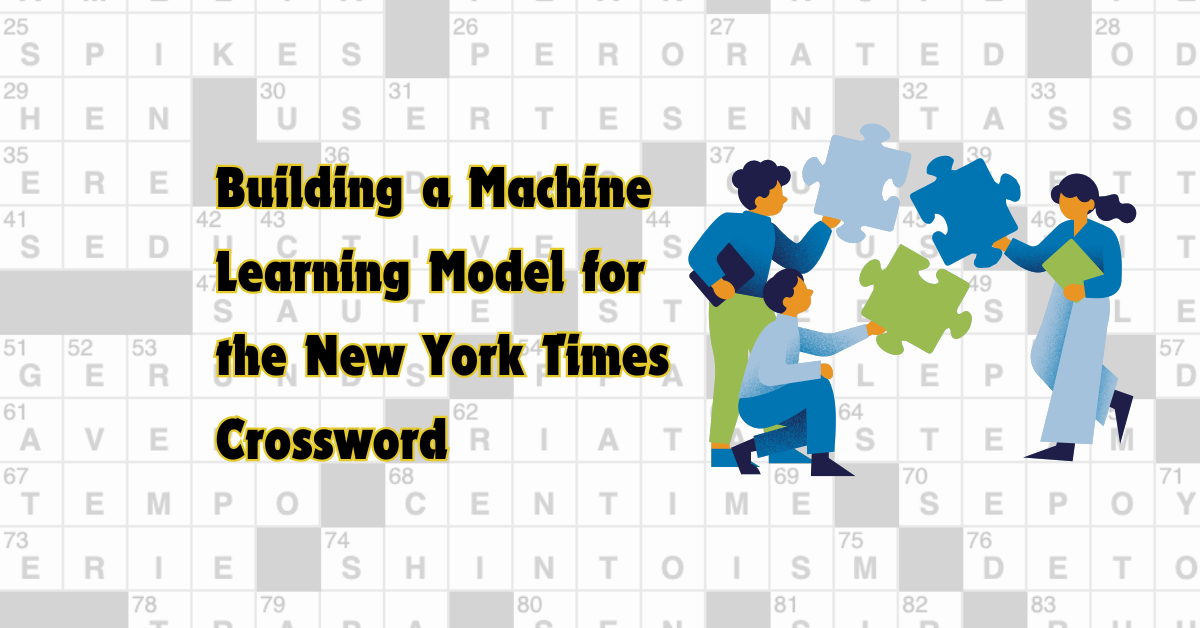Understanding these confuses requires a mix of dialect capability, design acknowledgment, and common information. In later a long time, the approach of machine learning (ML) has opened unused wildernesses in mechanizing complex errands customarily saved for human insights. This article explores the captivating crossing point of machine learning and crossword confusion, enumerating the advancement of a show competent in understanding NYT crosswords.
The Complexity of Crossword Puzzles
The Structure of NYT Crosswords
NYT crosswords change in trouble from Monday to Sunday, with Monday being the easiest and Saturday the hardest. Sunday confuses are bigger but of direct trouble. Each astound comprises a grid of black and white squares, where the objective is to fill the white squares with letters to form words or expressions, based on given clues.
Types of Clues
Clues can be direct or include wordplay, re-arranged words, or quips. They regularly require not fair coordinated knowledge but too horizontal considering and social awareness. This complexity makes crossword puzzles a challenging space for machine learning models.
Machine Learning Basics
What is Machine Learning?
Machine learning includes preparing calculations on data to empower them to make expectations or decisions without express programming. It includes directed learning (with labeled data), unsupervised learning (finding patterns in unlabeled information), and support learning (learning through rewards and penalties).
Natural Language Processing (NLP)
A significant subset of machine learning, NLP deals with the interaction between computers and human dialect. NLP methods are basic for understanding and creating human dialect, making them vital for creating a show to solve crosswords.
Developing a Machine Learning Model for NYT Crosswords
Problem Formulation
The task of solving a crossword puzzle can be broken down into several steps:
Understanding Clues: Interpreting the given clues using NLP techniques.
Generating Candidates: Producing potential answers for each clue.
Filling the Grid: Placing the candidates in the grid while ensuring they fit both horizontally and vertically and adhere to the rules of crossword construction.
Data Collection
The first step is to collect an expansive dataset of past NYT crossword astounds, counting grids, clues, and arrangements. This information is essential for preparing the show. Fortunately, numerous files are accessible online, giving a rich source of preparing material.
Preprocessing
Preprocessing includes cleaning and organizing the data. This incorporates tokenizing clues (breaking them down into individual words or expressions), evacuating punctuation, and normalizing content (converting to lowercase, stemming, and lemmatizing).
Building the NLP Model
Word Embeddings
These embeddings change over words into dense vectors that capture their implications based on the setting. For instance, BERT (Bidirectional Encoder Representations from Transformers) can understand the context in both headings, making it profoundly effective for translating complex clues.
Sequence-to-Sequence Models
Sequence-to-sequence (Seq2Seq) models are utilized to generate conceivable answers from given clues. These models, regularly built utilizing Repetitive Neural Systems (RNNs) or Long Short Term Memory (LSTM) systems, can handle variable-length input and yield groupings, making them appropriate for clue elucidation.
Generating Candidates
Once the model deciphers the clue, it needs to produce potential answers. This can be accomplished utilizing a language model prepared on a huge corpus of crossword arrangements. The model can recommend likely words or expressions based on the clue and the known length of the answer.
Grid Filling Strategy
The final challenge is to fill the crossword grid. This includes guaranteeing that the created words fit both horizontally and vertically without conflicts. This is where imperative satisfaction strategies come into play.
Constraint Satisfaction Problem (CSP)
Crossword filling can be formulated as a CSP, where:
- Variables represent the slots in the grid.
- Domains are the possible words for each slot.
- Constraints ensure that intersecting slots have matching letters.
Backtracking Algorithm
A backtracking algorithm methodically investigates possible word situations, backtracking when it experiences conflicts. This strategy, whereas computationally intensive, is compelling in finding arrangements that fit all constraints.
Optimization Techniques
To improve the efficiency and accuracy of the model, various optimization techniques can be employed:
- Heuristics: Use heuristics to prioritize certain clues or slots based on their difficulty or connectivity.
- Pruning: Eliminate unlikely candidates early in the process to reduce the search space.
- Ensemble Methods: It Combines multiple models to leverage their strengths and mitigate their weaknesses.
Challenges and Solutions
Ambiguity in Clues
Clues often have numerous elucidations. To handle this, the show can be prepared on a different set of puzzles to learn common designs and word affiliations. Furthermore, utilizing a large context-aware dialect show like GPT-3 can offer assistance in way better understanding equivocal clues.
Rare Words and Proper Nouns
Crosswords as often as possible include obscure words and appropriate things. To address this, the show can be increased with external databases like Wiktionary or Wikipedia to extend its lexicon and knowledge base.
Computational Complexity
Solving a crossword astound in real-time is computationally requesting. Executing parallel processing and utilizing high-performance computing assets can help oversee this complexity. Also, optimizing the backtracking algorithm with progressed strategies like energetic programming can progress efficiency.
Evaluation and Testing
Metrics for Success
The success of the model can be evaluated using several metrics:
- Accuracy: The percentage of correctly filled squares.
- Completion Rate: The percentage of puzzles fully solved.
- Time Taken: The time required to solve a puzzle.
Testing on Historical Data
The model ought to be tried on a partitioned set of authentic confuses not utilized during preparation. This helps in surveying its generalization capacity. Execution should be compared over distinctive trouble levels to guarantee robustness.
Real-World Testing
For real-world approval, the model can be deployed to fathom modern NYT crosswords as they are distributed. User criticism and execution information can be utilized to ceaselessly refine and improve the demonstrate.
Future Directions
Enhanced NLP Models
Future enhancements can use more progressed NLP models like GPT-4 or beyond, which offer indeed way better understanding and era capabilities. These models can handle more complex clues and subtleties in language.
Integration with Other AI Techniques
Combining machine learning with other AI strategies like knowledge charts and master systems can improve the model’s capacity to get it and unravel crosswords. Information charts can give setting and connections between substances, improving clue interpretation.
User Interaction
Incorporating user interaction can make the demonstration more versatile and responsive. For occurrence, allowing users to give criticism on suggested answers can offer assistance to the show to learn and move forward over time.
Conclusion
Building a machine learning show to unravel NYT crossword confusion is a captivating and challenging endeavor. It requires a profound understanding of normal dialect processing, the data-driven era of word candidates, and effective limitation satisfaction procedures. Whereas there are critical challenges, advancements in machine learning and AI offer promising solutions. As these advances proceed to advance, we can anticipate indeed more advanced models able of tackling complex phonetic confuses with greater precision and effectiveness. Through continuous development and refinement, machine learning models may one day equal the best human solvers in translating the perplexing astounds of the Modern York Times crossword.











